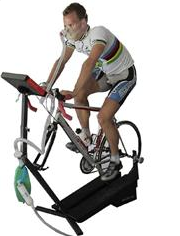
Marcel Kittel is one of the few sprinters that one altitude internship finished before the start of the Tour de France. Recent research has shown that he has done well.
Athletes who go on altitude training do that for their sake improve endurance. The thin air stimulates the production of Red blood cells. More red blood cells means a higher oxygen transport capacity. This can have a positive effect on your condition. A lesser known effect of altitude training is the improvement of sprint speed. Perhaps this will now change. Raphael Faiss and his colleague scientists think that sprint training at artificial altitude leads to a better blood circulation in the muscles.
Training at height seems the to improve sprint capacity. When this training has been specifically, intensively and interspersed with training at “sea level”, soccer, hockey and sprinters, for example, could improve. This has been demonstrated by a thorough literature study by Australian researchers.
Live High Train Low (LHTL)
The most common form of altitude training nowadays is 'Live High, Train Low', where the athlete sleeps for a longer period of time in a altitude tent and trains at "sea level". LHTL is effective to improve fitness when athletes sleep at 2000-2500 m altitude for about 4 weeks. Many athletes make use of this and the effect can be measured individually by means of a blood test.
Live Low Train High (LLTH)
Alternatives have also been sought for achieving a performance improvement. This alternative is "Live Low, Train High', in which athletes train at artificial height and live at “sea level”. However, it has been found that LLTH has little or no effect on endurance performance because athletes are unlikely to spend enough time at altitude for significant changes in blood. On the other hand, there are indications that training at height can lead to improved anaerobic performances such as repeated sprints and short distance performances. This is because the sprint stimulus is greater due to the reduced oxygen pressure in the air, which would improve glucose transport and the regulation of blood acidity.
In this very careful literature study, the authors have taken into account the matching of relative and absolute training intensity, training form and placebo effects. They assume that LLTH may be suitable to improve intensive repeated sprint performance, with the following criteria being important:
- The training has to be like this specific to be possible
- The training must intensive or have sprint intervals
- The altitude training is interspersed with training at “sea level”
Conclusion
'Live High, Train Low' is effective for improving duration performance if athletes stay at artificial heights long enough. In contrast, 'Live Low, Train High' does not seem to be effective for improving endurance performance. However, this training form can have a positive effect on anaerobic performance, such as a repeated sprint. This training must be specific, intensive and interspersed with training at “sea level”.



